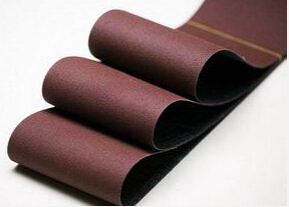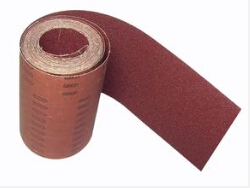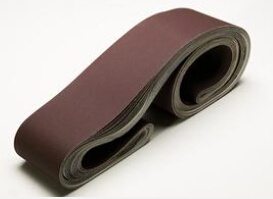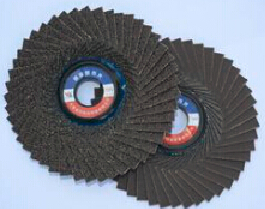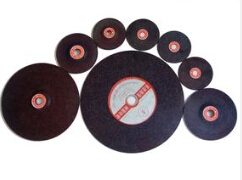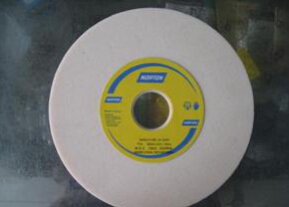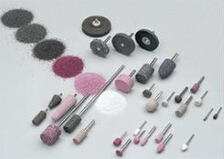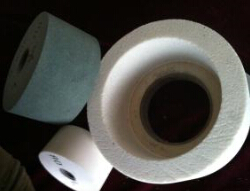Abrasives Special Treatment
Zhongsen Editor 2018-03-14Abrasive tools basically carry out the entire grinding process with a single layer of abrasive during the grinding process. After the abrasive particles are worn or shed, no abrasive grains continue to grind. Therefore, this layer of limited particles is particularly important. How to prevent the abrasive particles from falling off and improve the grinding effect of each particle becomes an important topic for researchers and manufacturers in abrasive industry. At present, the following methods have been adopted:
(1) Calcination/Heat Treatment: After the abrasive is calcined at the high temperature (800-1300 ℃) around 2-4 hours, remove and cool. If the temperature is above 800-1300℃, the sintering phenomenon will occur. At this moment, the abrasive can be used when crushed and sieved. Calcination can play two roles. One is to improve the single-grain strength when the cracks forming in the granulation process sintered at high temperature. The other is to increase the capillarity and hydrophilic of the abrasive and improve the abrasive adsorption to the binder. Properties of the abrasive will be improved in many aspects after calcination, such as brown fused alumina, with hardness increased by 10%, toughness by 10%, hydrophilic by 3.5 times, grinding by 3%, durability by 30-50%.
(2) Alkali treatment: The abrasive is soaked in 2% NaOH solution for about 30 minutes, then cleaned and dried. As the alkali has a certain corrosive ability to the abrasive, it increases the roughness of the abrasive surface and improves the capillary action on the surface of the abrasive particles, which will help the bonding effect between the abrasive and the binder so that the abrasive particles are not easily fallen off from the abrasive surface, thus improving the grinding effect and durability of the abrasive tool. Due to the alkali’s erosion to Al2O3, the alkali treatment makes the corundum work better in abrasive industry.
(3) Metal Salt Treatment: The abrasive can be used after soaked in the metal salt solution with the concentration of 0.1% -1.0% for about 30 minutes, taken out and dried, and then calcined to 500 ° C for about 30 minutes and cooled. For example, if BFA is soaked in the 0.5% ferrous sulfate solution about 30 minutes and then calcined at 800 ℃, which will help improve the grinding efficiency of the abrasive tools by 4-20%. The commonly used metal salts are ferrous sulfate, nickel acetate, nickel oxide, copper sulfate, copper sulfate-borax and iron nitrate, etc. Also Fe2O3, Fe3O4 and other materials in the abrasive with a binder for adhesion ,calcined to 500- 800 ℃ for half an hour, can be used aftercooling, which also have obvious grinding effect.
(4) Ceramic liquid treatment: Ceramic liquid with feldspar, clay or limestone contents is coated on the abrasive surface and sintered at high temperature (about 1000-1300 °C), which forms a thin layer of ceramic material on the surface to help the bonding of abrasive and binder, thus enhancing the abrasive durability.
(5)Resin liquid treatment: Soak the abrasive in a liquid mixture of the liquid phenolic resin and a small amount of a metal oxide such as Fe2O3, Fe3O4 or TiO₂ described in (3). about 30 minutes, and then take out and dry. Because of the resin liquid’s good permeability, it can penetrate into the tiny pores of the abrasive, which increases the bond of the abrasive to the binder and improves the durability of the abrasive. In the meantime, also the addition of metal oxides in the resin solution increases the heat dissipation of theabrasive grains in the abrasive tool, which is beneficial to the improvement of the abrasive efficiency.
(6) silane coating treatment: Silane, also known as organic silicon, is a special chemical compound of silicon and organic genes, which has both inorganic and organic properties. Therefore, after silane coating, it is beneficial to the bonding of abrasives and binders. There are two coating ways. The first one is to apply the silane solution directly to the surface of the coated abrasive. The optimal and most effective thickness of the coating is single-molecule thickness, which is difficult to operate; the other easier one is to add silane into the adhesive glue. This method is not as effective as the former, but it is easy to handle in production.

